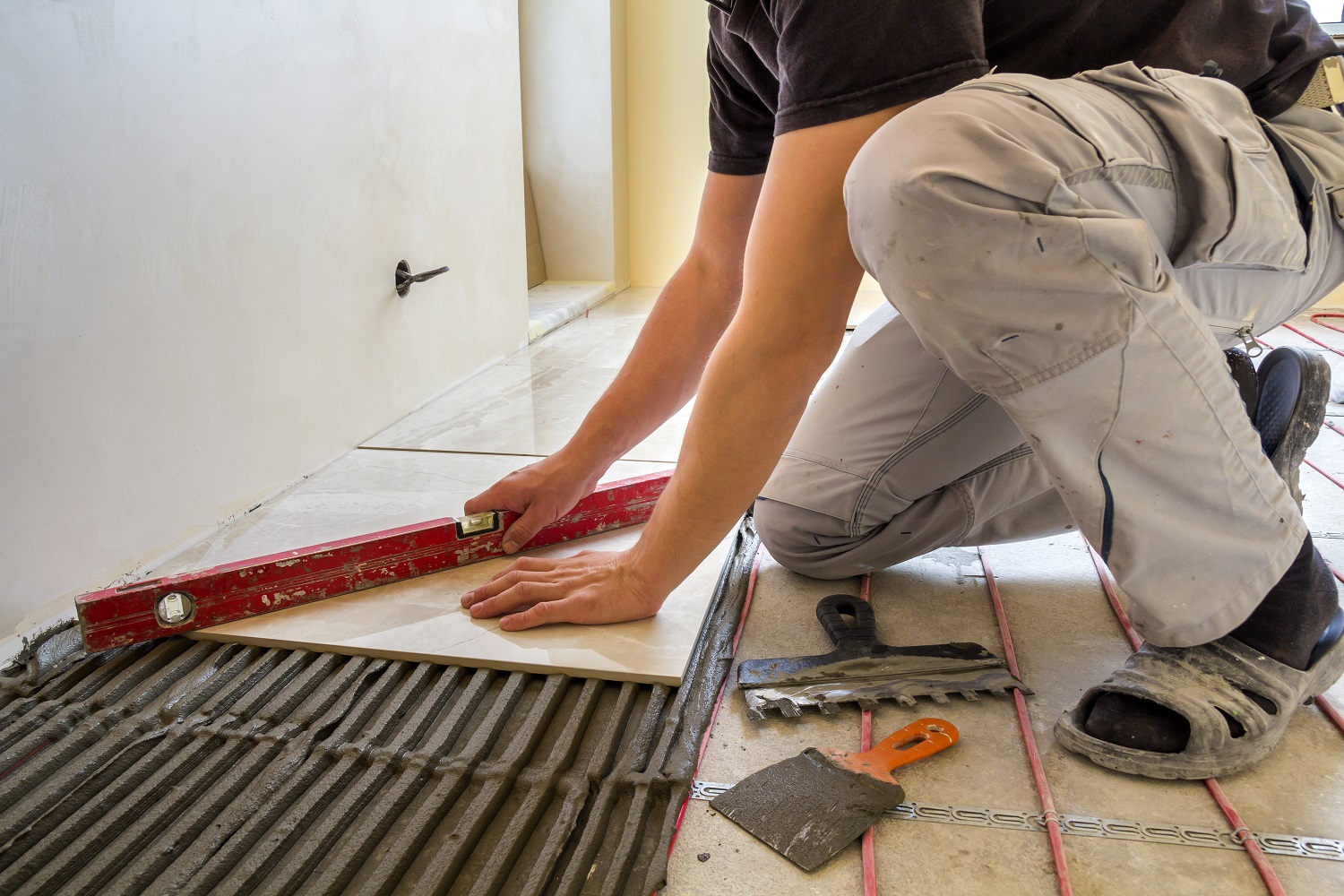A low-voltage floor heating system is a great way to keep your floor and home warm in the winter. Places that have heated floors make you feel warm and cozy all the time. You will love sauntering on it barefoot, and your pets will also love laying on it.
Low-voltage floor heating systems can be installed discreetly under a large number of floor coverings. Not all floor coverings can be used over the radiant floor heating system. Some flooring materials work better than others. The main difference between the flooring materials is the material’s thermal conductivity. It means how quickly and efficiently the material can transfer generated heat over the floor surface.
Table of Contents
Ideal Flooring Properties for Radiant Heating
Apart from the thermal conductivity of the flooring material, you should also consider some other factors, such as:
- The thickness of the flooring material
- Material’s tendency to expand and contract
- Weather material is prone to heat or water damage
The best type of floor covering for a radiant floor heating system
If you have decided to install a low-voltage flow heating system and are wondering which floor covering is best, you have come to the right place. In this article, we have outlined some of the best floor coverings that can be used with radiant floor heating systems.
TILE AND STONE
Tile and stone are the best floor coverings to use with the radiant floor heating system. They have high thermal conductivity. It means that when an underfloor heating pipe or electric cable generates heat, the heat will quickly and efficiently transfer to the floor surface. Tile and stone also retain the heat for a longer period. You can enjoy walking on a heated floor even after turning off the system. The heat-retention ability of tile and stone makes the system more efficient.
The thickness of both of these materials impacts the heat output. However, it takes more time for the system to heat these materials. However, if you are looking for a responsive system, you should stick to a maximum thickness of 3/4″.
Here are the properties of some different tile and stone floor coverings:
Ceramic and stone tiles
- Thin flooring material with excellent heat transfer properties
- Easy to clean
Polished concrete
- High thermal conductivity allows it to heat up fast.
- Best for both electric and hydronic radiant floor heating systems
Marble
- Good thermal conductivity, but it takes longer to heat the floor surface.
Slate and flagstone
- Highly conductive flooring material that is good for covering an underfloor heating system.
- Ideal for high-footfall areas
WOOD FLOORING
Different wood materials have their own thermal properties. All kinds of wood floor coverings are not suitable for use with the radiant floor heating system. A change in floor surface temperature may affect the moisture content of the wood. So you should consider choosing a wood floor covering that can adapt to these temperature changes without changing its appearance.
Engineered timber is one of the best wood flooring materials that performs well with a radiant floor heating system. It is not affected by changes in floor temperature. When you decide on wood floor coverings, consider the thickness of the floorboards. It should not block the heat like an insulator.
Here are some of the wood floor coverings mentioned with their properties:
Engineered timber
- The best wood flooring for a radiant floor heating system
- Adaptable to the temperature change of the floor
- It does not expand or contract with the changes in moisture content.
Solid hardwood
- Prone to expansion and contraction
- Prone to humidity
- Always ask the manufacturer about the suitability of heated floors.
Soft woods
- One of the best materials used with a radiant floor heating system
- Check the thickness of the floorboards to determine heat output.
Bamboo
- Its appearance looks like engineered wood.
- A good thermal conductor and suitable for use with a radiant floor heating system
LAMINATE FLOORING
This synthetic floor replicates the appearance of hardwood. Laminate flooring offers stain and scratch resistance. It performs well with the radiant floor heating system. Laminate flooring is built with layers of wood running in opposite directions, thus creating a more stable material when compared to hardwood. Additionally, it does not expand or contract like solid hardwood.
VINYL FLOORING
Vinyl flooring also works well with the radiant floor heating system. It hits up and cools down quickly. This floor covering comes with a top-floor temperature restriction. The top floor temperature must not exceed 80.6°F (27°C). This restriction limits heat output. That is why vinyl flooring is not recommended for use in places with high heat loss, like older sunrooms.
So these are some of the best floor covering materials with higher thermal conductivity. However, some of the material comes with temperature restrictions, which limit the maximum heat output. Overall, what you need to consider most is the thermal conductivity and the thickness of the floor covering materials.
Read more on Theinspirespy.com











